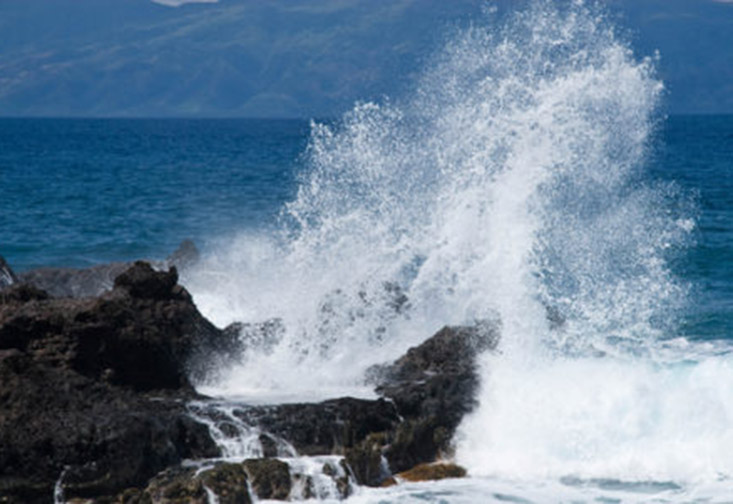A USFSP chemistry professor plans to measure spray from the ocean’s waves in an attempt to unlock the secrets to fighting global climate change.
Yasin Elshorbany, an Assistant Chemistry Professor and a former NASA scientist, was recently awarded part of a $800,000 grant from the National Science Foundation that will be used to collect and analyze aerosol particles from breaking waves at the Tudor Hill Marine Atmospheric Observatory in Bermuda. Elshorbany’s team will also use 3D earth system models of different complexity to simulate the fate of atmospheric pollutants at the interface between the aerosol and gas phase. His goal is to better understand the budget of oxidants, which help degrade atmospheric pollutants, including greenhouse gases such as methane.
“This research is relevant to the larger questions of air quality and global climate change,” said Elshorbany, who received $260,000 of the overall grant.
Elshorbany, and his collaborator Professor Zianliang Zhou of the State University of New York at Albany, will be looking at the sea salt aerosols created by breaking waves. These aerosol particles are highly enriched in organic matter and nitrate. The research team hopes to determine whether the aerosols lead to the formation of nitrous acid (HONO), which its photolysis is a major source of atmospheric oxidants.
The distribution and chemistry of HONO are currently not well understood in marine environments. However, the limited data currently available suggests there is a considerable amount of HONO in the area known as the Marine Boundary Layer, the part of the atmosphere that has direct contact with the ocean.
When HONO molecules are broken down into smaller units through the absorption of light, it can lead to the creation of OH free radicals, which fight air pollutants. Elshorbany’s team believes the sea spray from the waves is a major source of HONO in the Marine Boundary Layer. This is significant because oceans account for more than 70 percent of the earth’s surface.
“Having a better understanding of the chemistry of these aerosol particles will help us develop better global atmospheric models that are able to more accurately predict the oxidation capacity of the atmosphere,” Elshorbany said.
Elshorbany and Zhou will conduct their field research in the summer of 2019. They plan to collaborate with scientists from University of York and University of Birmingham, who are leading a major field study at the Cape Verde observatory regarding the atmospheric chemistry of the Marine Boundary Layer. Combining both sets of data will lead to a better understanding of HONO and its impact on global atmospheric chemistry.
This research builds on Elshorbany’s earlier work, which was recently published in the magazine EOS. He and a team of other researchers studied permafrost, ground that stays at or below zero degrees Celsius for two or more years. Scientists believe permafrost is thawing more quickly than expected. As it thaws, permafrost is releasing carbon emissions into the atmosphere, which may be accelerating climate change.
Elshorbany and his fellow researchers have developed a model that will make it easier for scientists to explore predictions of how melting permafrost might affect carbon release.
Elshorbany said this work is important because the more information scientists have about predicting the effects of climate change, the better chance they have of understanding it and translating the information to the general population.
“Climate change is happening. It’s not just predictions,” Elshorbany said. “And the patterns we are seeing suggest that it is human-based.”
